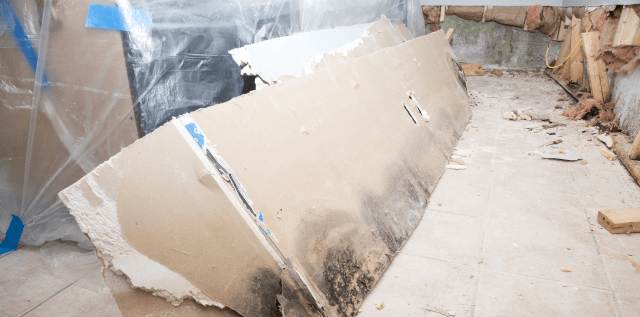Basement Mold: Health Risks and Mold Prevention Tips
Understand the health symptoms associated with a moldy basement and what you can do to banish and prevent it.

Mold grows quickly on damp organic materials in basements, including cardboard, drywall, wood, and insulation. Airborne mold spores can circulate throughout the home.
Mold stains and musty smells are common problems in areas with a lot of moisture. In damp basements and crawl spaces where moisture is high, ventilation is poor, and temperatures are warm, invisible, airborne mold spores can quickly multiply, leading to unhealthy conditions. For this reason, it’s important to act quickly to get rid of your mold problem.
Here we’ll discuss common health symptoms caused by a mold problem and ways you can effectively deal with basement mold.
Mold problems: Signs and symptoms to be aware of
If you have a mold problem, you’ll likely be able to see it or smell it. A musty smell is an all-too-common and unpleasant sign of mold. In very damp basements, splotches of mold can often be found growing on cardboard boxes, clothing, furniture, drywall, ceiling tiles, carpets, insulation, and wood surfaces, such as wall paneling and structural supports. Mold can even grow on dust!
Can mold in the basement make you sick?
The short answer is yes, especially if you are someone who is sensitive or allergic to mold. There are a variety of health symptoms that may be caused by mold exposure.
Common symptoms include:
- Nasal congestion
- Wheezing
- Eye irritation
- Skin irritation
People with asthma or allergies to mold may experience severe reactions, including fever and shortness of breath. That said, past research has shown a link between mold exposure and upper respiratory tract symptoms, such as coughing and wheezing, in otherwise healthy people (Institute of Medicine).
The air in your basement circulates throughout the entire house, so even if you don’t spend a lot of time in the basement itself, you may still be affected by mold spores in the basement air.
Bottom line: If you notice a musty odor, see mold stains, or experience an increase or worsening of allergy-like symptoms, it’s a good idea to check for mold in your basement. If you have a wet basement with a severe mold problem, it’s best to consult an expert in mold remediation to clean up the mold, before hiring a basement waterproofing professional to fix the conditions in the basement that encouraged mold growth in the first place, such as water seepage and excess humidity.
What to do about moisture and mold problems in your basement

White stains on a basement wall (called efflorescence) is a sign of water or moisture intrusion.
Avoid future mold problems with these preventative measures:
- Keep an eye out for plumbing leaks and fix them right away. Mold spores can grow and multiply in just 24 to 48 hours where there’s moisture.
- Clean mold stains and remove moldy items. Cleanup should be handled by a mold remediation professional if moldy areas are larger than 10-square-feet (US Environmental Protection Agency).
- Insulate water pipes to prevent condensation from dripping from “sweating” pipes.
- If you have a basement bathroom or laundry room, ensure proper ventilation to prevent warm, humid air from accumulating inside the basement.
- Keep your gutters and downspouts clear of debris and extend your downspouts, if needed, to keep water from pooling near the foundation.
- Prevent a wet basement with effective basement waterproofing, which may include the installation of a sump pump and interior drainage system.
- Keep humidity levels in your basement under control with a basement dehumidifier and air filtration system with the capacity to handle the entire below-grade space.
- Replace organic materials, such as drywall, wood flooring, and carpeting with mold-resistant solutions designed for basements.
Living with a moldy basement: Key takeaways
Damp, moldy basements (and crawl spaces) pose a risk to the health and safety of your home and its occupants. By taking steps to waterproof and protect your basement from moisture, humidity, and mold growth, you can make a significant difference in the overall health of your entire home. If your basement is damp, musty, or moldy, schedule a free consultation and estimate with your local Basement Systems waterproofing contractor today.
Updated: August 24, 2021

